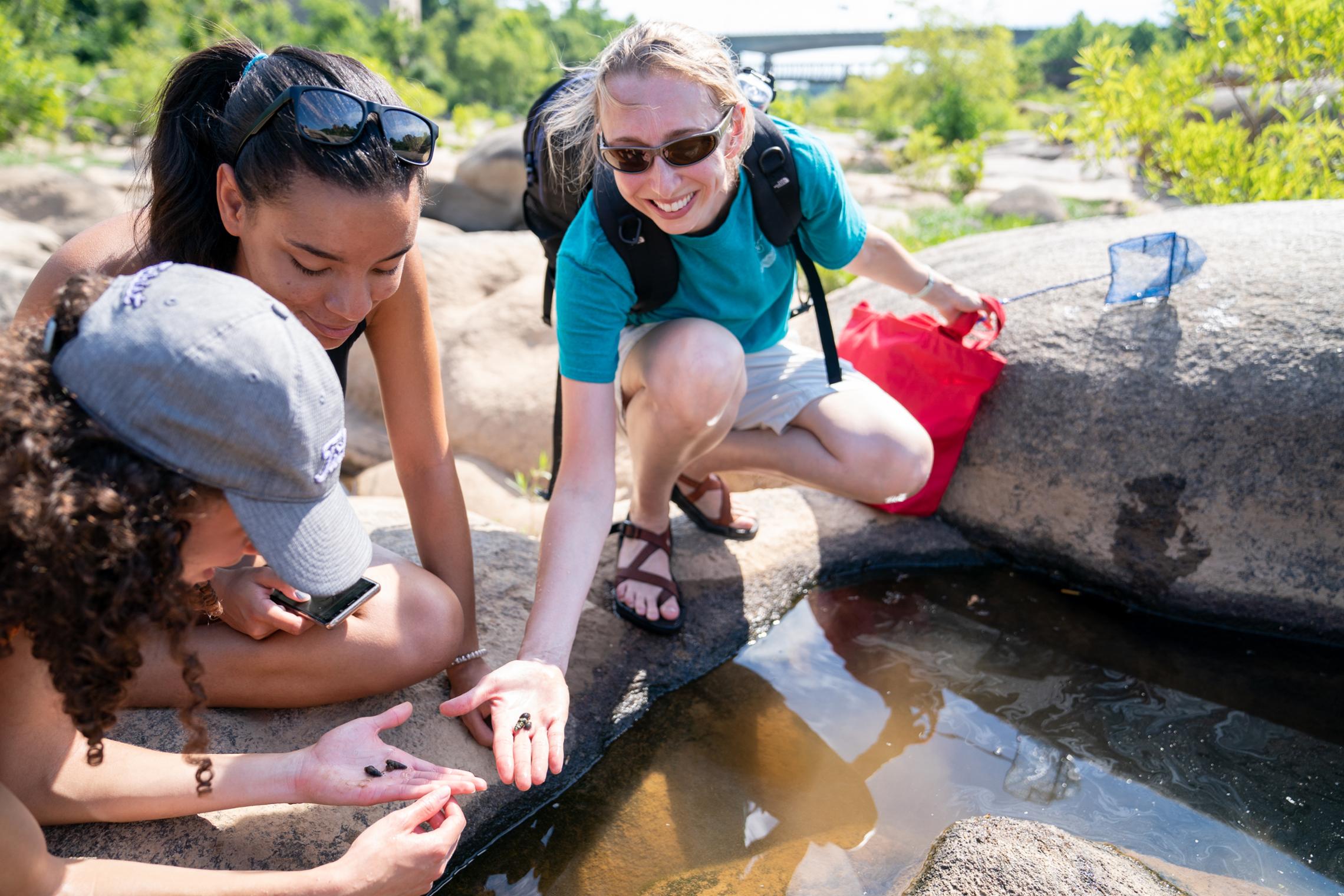Innovation and Research
Tracking invasive species
Mentored research sheds light on what’s bugging our planet
On the surface, it looks like Dr. Kristine Grayson is studying insects and reptiles in her research lab at the University of Richmond. Look closer and you will find that her work is far more comprehensive. Grayson is working to learn more about growth patterns and what they mean for our planet.
“I would call myself a population biologist,” Grayson explains.
One species Grayson has focused on since arriving at the University of Richmond is the red-backed salamander. She and her undergrad researchers monitor the salamander in the James River, checking to see whether its population is growing or declining here in Virginia. Other researchers in North America also are studying the amphibian as part of a much bigger project.
“This species is in a big geographic range,” Grayson says. “We’re at the southern part of where it lives now. You can get them all the way up to Canada. If you have everyone using the same methods, then we can all talk about how the populations are going up and down and responding to climate in these different places.”
The results could show not only a trend for this salamander, but for our overall environment.
“We’re trying to find out if it can cope with climate change or if it’s going to start seeing decreases in abundance based on seasonality,” she adds.
Like the salamander, the spongy moth also has a story to tell about how it’s thriving in North America. Grayson says the moth was brought to New England about 150 years ago. A heat map shows how far it has already migrated across the United States.

The moth is tolerant of cold, so researchers like Grayson are monitoring to see how far south it is going. The scientists then feed that information back to the U.S. Department of Agriculture (USDA), which is tracking the moth’s movement. Grayson says the USDA is trying to control the population and keep it out of the Ozark, Smoky, and Appalachian Mountains.

“These guys mostly like oak and maple,” says Grayson, referring to the trees in those regions. “And that affects the timber industry. It already is a big deal for lumber because if they lay eggs on trees there are quarantine regulations the timber industry must follow, and it’s also impacting aesthetics. People are expecting to hike in the summer in beautiful, forested landscapes and when it’s a full-on outbreak, it’s raining caterpillar food, and the trees are bare. Eventually the trees can die.”
Grayson says the worst-case scenario is the severe damage or extinction of a tree species. She cites the maple tree industry, which is currently embattled because of this issue.
Another insect Grayson tracks, the emerald ash borer, has already done immeasurable amounts of harm in forests. Specifically, to ash trees.
“In 10 years it made it through all our ash forests—it basically killed most of them,” she says. “So, they’re trying to build resistant ash trees and build our ability to release the predators of the ash borer into the wild, to tamp down their populations.”
Grayson’s love for biology and nature was formed in her childhood, but her love for research came from her own liberal arts education. Her own undergrad research, working with turtles, set her on this path.
“I definitely want to do the same thing for students here,” Grayson says. “I want to give them opportunities to gain research experience, either because it benefits the trajectory they want to go on in any research or science or because they genuinely want to work on a set of questions that unlock this research path.”

Grayson also advocates for students who want to study abroad.
The associate professor studied in Kenya during her undergrad and now, more than two decades later, takes her own students there to do research.
“It was such a meaningful world view,” Grayson says, describing the full-circle moment.
She now has her sights set on New Zealand and plans to take students there through Richmond’s EnCompass program. EnCompass provides a full-paid study abroad opportunity to students who are unlikely to travel internationally. Select students include first-generation students, student-athletes, underrepresented, and underserved students.
Dr. Grayson’s enthusiasm is always there. It’s always obvious, and she always takes initiative to push her students towards opportunities that they might not have considered in the past.
“Dr. Grayson's enthusiasm is always there,” says Emily Lekas, ’25. "It's always obvious, and she always takes initiative to push her students towards opportunities that they might not have considered in the past."
A Florida native, Lekas was originally an English and journalism major at the University of Richmond but caught the bug for biology when she researched salamanders with Dr. Grayson. Lekas is now on her third study abroad opportunity. She’s monitoring the effects of pollution on loggerhead sea turtles in Croatia. In the spring she will finish her senior thesis with Dr. Grayson as her advisor.
“She really takes the time to get to know individual students and what they need in their trajectory for their career, and supports them through that,” Lekas says.
Grayson says her partnership with students like Lekas is what she loves most about her job at the University of Richmond.
“You get to help and guide them through the mechanics of doing biology, not just learning biology,” she says. “It's a much more personalized education experience.”
